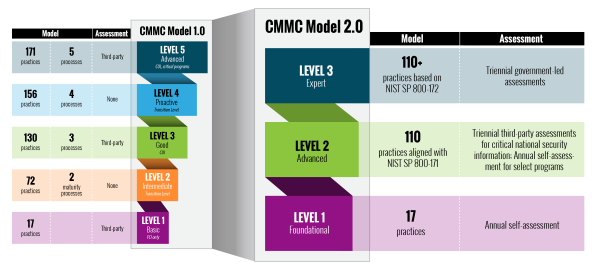
The cybersecurity landscape is undergoing a seismic shift, driven by technological advancements, evolving threats, and a heightened focus on regulation. From the talent crunch in cybersecurity to the rise of Generative AI and the increasing importance of soft skills, the industry is bracing for a transformative year. This guide delves into the Top 10 Cybersecurity Trends for 2024.
1. The cybersecurity skills crunch will mean less people/higher costs for organizations.
One of the most critical challenges facing the cybersecurity industry is the talent gap. According to the Bureau of Labor Statistics1, the employment of information security analysts is projected to grow by 33% from 2020 to 2030. This rate of growth is much faster than the average for all occupations, highlighting the increasing demand for cybersecurity expertise. However, the supply of qualified professionals is not keeping pace with this demand, leading to a talent gap that poses a serious risk to organizations. For businesses, this can mean higher labor costs. In the next few years, scarcity will cause salaries to increase, and upskilling existing employees will require added costs for development and training.
2. Cybersecurity professionals will have increased need for soft skills.
While technical expertise remains a the primary focus for anyone working in cybersecurity, there will be a growing emphasis on the importance of soft skills for cybersecurity professionals. These include interpersonal communication, problem-solving, and emotional intelligence, among others. Effective communication will be crucial when explaining complex security issues to non-technical stakeholders so that decision-makers can understand how and why to take appropriate action. Indeed2 suggests that a blend of technical and soft skills will be the hallmark of the most sought-after cybersecurity professionals.
3. There will be more cybersecurity in board rooms.
According to a Gartner Report3, around 70% of corporate boards are expected to have at least one member with specialized cybersecurity knowledge by 2026. Another report from Moody’s4 reveals that company cyber budgets have jumped by 70% in four years. This significant increase in financial allocation is a testament to the escalating importance of cybersecurity at the highest levels of corporate governance. Boards are not just approving larger budgets; they are actively participating in discussions about how these resources are allocated and used.
As a result, the role of the CIO (Chief Information Officer) will become even more important
According to Info-Tech’s Annual CIO Survey Report For 20245, one of the top priorities for CIOs in 2024 will be to engage with the board on cybersecurity matters. This involves not just presenting technical metrics but translating these metrics into understandable, actionable business strategies. The recent SEC charges against SolarWinds serve as a stark reminder of the consequences of neglecting cybersecurity at the governance level. The SEC alleges that SolarWinds misled investors about its cybersecurity measures, leaving the company vulnerable to a significant cyberattack disclosed in December 2020. This event led to a sharp decline in the company’s value, underscoring the critical importance of taking cybersecurity seriously at the highest levels of an organization. And the SEC’s action in this case should act as a wake- up call for publicly traded companies that wish to avoid the same fate.
4. IoT (internet of things) cyberattacks will increase.
The proliferation of IoT devices, ranging from smart home appliances to industrial sensors, has expanded the attack surface for cybercriminals. According to InformationWeek6, security measures are not keeping pace with the grow of IoT technology, widening the security gap. For businesses, one of the greatest vectors for threat is IoT devices used by remote and hybrid employees without proper security measures in place on devices used to connect to sensitive data. McKinsey7 notes that the lack of standardized security protocols is a significant concern, especially considering the IoT is expected to potentially be worth up to $12 trillion dollars globally by 2030.
5. More cybersecurity regulations are coming down the pike.
The newest regulations aim to safeguard national security and ensure economic stability by setting standards and guidelines for cybersecurity practices. In the United States, the 2024 defense bill has allocated $13.5 billion specifically for cyberspace activities. Notably, in the US financial sector, the SEC has introduced new rules requiring companies to include cybersecurity risk factors and incidents in their financial disclosures set to take effect on December 15, 2023. In the UK, the Product Security and Telecommunications Infrastructure (PTSI)8 act was passed into law in 2022 and aims to regulate products capable of connecting to a network, such as IoT devices like networked CCTV cameras, with a compliance deadline of April 29, 2024.
Similarly, the EU is focusing on the cybersecurity of a product’s life cycle for IoTs that connect to a network by implementing the European Cyber Resilience Act (CRA). The CRA is designed to replace the existing European Union agency for cybersecurity ENISA. It will oversee certification schemes for ICT products, services, and processes and is set to be officially released in 2024.
6. Generative AI will continue to have long lasting impacts on cybersecurity.
The integration of Artificial Intelligence (AI) into cybersecurity is not a new phenomenon, but the advent of generative AI marks a significant milestone. One of the most concerning developments is the use of deepfake technologies for social engineering attacks. According to a report by Cyber Magazine9, the proliferation of deepfakes is causing increasing concern in the cybersecurity community. AI-generated synthetic media can impersonate individuals, manipulate content, and deceive systems, making them a potent tool for cybercriminals aiming to compromise business networks and data. Beside deepfakes, AI is contributing to more sophisticated phishing attempts. AI can be used to create more believable phishing emails with programs like ChatGPT, Bard, and Claude and to automate the process of sending these emails, making attacks more efficient and harder to detect.
On the flip side, advancements in AI are also empowering organizations to bolster their defenses. A Gartner report10 highlights the growing importance of Machine Learning in data science, including real-time anomaly detection. Additionally, AI-driven incident response mechanisms are becoming increasingly sophisticated. These systems can automatically isolate affected network segments, initiate predefined security protocols, and even communicate with human operators to provide real-time updates on security incidents.
7. You will see evolving, more sophisticated phishing attacks and the cost will be much higher.
Phishing attacks have long been a staple in the cybercriminal’s toolkit, and Humans are the weakest link in the chain. 95% of cybersecurity issues traced to human error11. The advancement of automated technologies and generative AI tools that can create more realistic and emotionally evocative phishing attempts is a large contributing factor on this front. Cybersecurity Ventures12 predicts that by 2025, cybercrime will cost companies and individuals over 10 trillion dollars worldwide.
8. Cyber warfare and state-sponsored cyberattacks will continue to increase.
Ongoing conflicts and significant electoral events around the world are expected to be flashpoints for cyber warfare activities. According to the U.S. Department of Homeland Security’s homeland threat assessment for 202413, state-sponsored cyberattacks are among the top threats facing the nation. Critical infrastructure sectors such as energy, transportation, and healthcare are likely to be primary targets. In 2022, one of the biggest attack types on infrastructure was remote management devices with a marked increase happening over the course of the year. In the current geopolitical environment, the trend for cyber warfare shows no signs of slowing.
9. There will be a move towards cyber resilience as cyberattacks become more common.
Organizations will no longer be solely focused on preventing cyberattacks; they will also be investing in strategies to ensure operational continuity in the aftermath of an attack. According to the National Institute of Standards and Technology (NIST)14, cyber resilience is “the ability to anticipate, withstand, recover from, and adapt to adverse conditions, stresses, attacks, or compromises on systems that use or are enabled by cyber resources.” However, it is not a one-size-fits-all concept; it can be implemented at multiple levels, including individual system elements, entire systems, and even across organizations or sectors. As cyberattacks become more frequent, organizations will likely invest more in training programs, technological solutions, and governance models that support cyber resilience. The aim is to build systems that not only defend against cyber threats but also adapt and recover quickly when attacks occur.
10. The zero trust model will continue to evolve.
The concept of zero trust has been a cornerstone in cybersecurity, operating on the principle of “never trust, always verify.”15 However, the zero trust model, which relies heavily on static rules and policies, is becoming increasingly inadequate. According to Gartner16, the future of it will demand more dynamic and adaptive security measures to cope with the complexities introduced by emerging technologies and sophisticated cyber threats. One of the major shifts in zero trust will be the incorporation of AI for real-time authentication. AI algorithms can analyze behavioral patterns and other contextual factors to make instantaneous trust decisions. Beyond that, the zero trust model will increasingly incorporate continuous monitoring of user activity. This approach extends the security perimeter past the initial point of entry, continuously verifying the legitimacy of a user’s actions throughout their session.
The adoption of zero trust is on the rise. According to a 2023 report by Fortinet17, 67% of survey respondents have adopted zero trust network access but have struggled to implement the full suite of strategies. In fact, in 2023, only 28% had achieved complete implementation – down from 40% in 2021. While there is an increase in the intention to adopt zero trust, the difficulties in achieving full planned deployment in the business environment require a higher degree of commitment.
Conclusion
As we confront the unfolding cybersecurity trends of 2024, it becomes clear that this year will be a watershed moment for digital defense. In an era where technological progress and cyber threats accelerate in tandem, robust and forward-thinking cybersecurity strategies are not just advisable—they are imperative. Organizations are called to bolster their digital ramparts with a blend of seasoned experts, cutting-edge AI technologies, and resilient operational blueprints that promise not just to endure but to dynamically counteract cyber incursions. The path to a fortified cyber future is complex and demands a unified front across all sectors and communities. It’s a path that companies like Back To Business IT are equipped to help navigate. Staying ahead of the curve and ready to act decisively will transform these emerging challenges into stepping stones for a more secure and resilient digital landscape.
1. https://www.bls.gov/OOH/computer-and-information-technology/information-security-analysts.htm
2. https://in.indeed.com/career-advice/career-development/cyber-security-skills
5. https://www.infotech.com/research/ss/annual-cio-survey-report-2024
9.https://cybermagazine.com/technology-and-ai/the-rising-tide-of-deepfakes-as-ai-growth-cause-concern
11. https://www3.weforum.org/docs/WEF_The_Global_Risks_Report_2022.pdf
12. https://cybersecurityventures.com/cybercrime-damage-costs-10-trillion-by-2025/
14. https://nvlpubs.nist.gov/nistpubs/SpecialPublications/NIST.SP.800-160v2.pdf
15. https://www.nist.gov/blogs/taking-measure/zero-trust-cybersecurity-never-trust-always-verify







